Eric Says This Kimchi is Perfect
Kimchi. I feel sure most of you have either tasted it or have even made your own batch of the fermented napa cabbage, which is known as baechu kimchi. I first made it quite awhile ago and have since tried different methods and recipes.
In order to achieve the distinctive funkiness of kimchi, fermentation has to occur and it’s easily achieved by combining certain vegetables and fruits, coating them in a sauce, and allowing time to take its course. There are a couple of ways to make the sauce. The first, and the one of which I’ve been most fond, is to cook up a mixture of rice flour, sugar, and water. This ‘slurry’ serves to bulk up the seasoning mixture, making it easy to coat the cabbage leaves, while also providing food for the active bacteria which is necessary for fermentation. The other method eliminates the slurry. I’ve had my best results using a slurry. Until now.
Eric explains that his mother, Jean, perfected this recipe after many many attempts, until she arrived at what he calls Jean’s Perfect Jar of Kimchi. And no, there is no slurry involved.
I’ve included a link to Eric’s mother’s recipe, which is very well explained, but I want to show you how it’s done and hopefully entice you to make it yourself because it is so far and above any baechu kimchi I’ve ever tasted that I can’t imagine using any other recipe ever again.
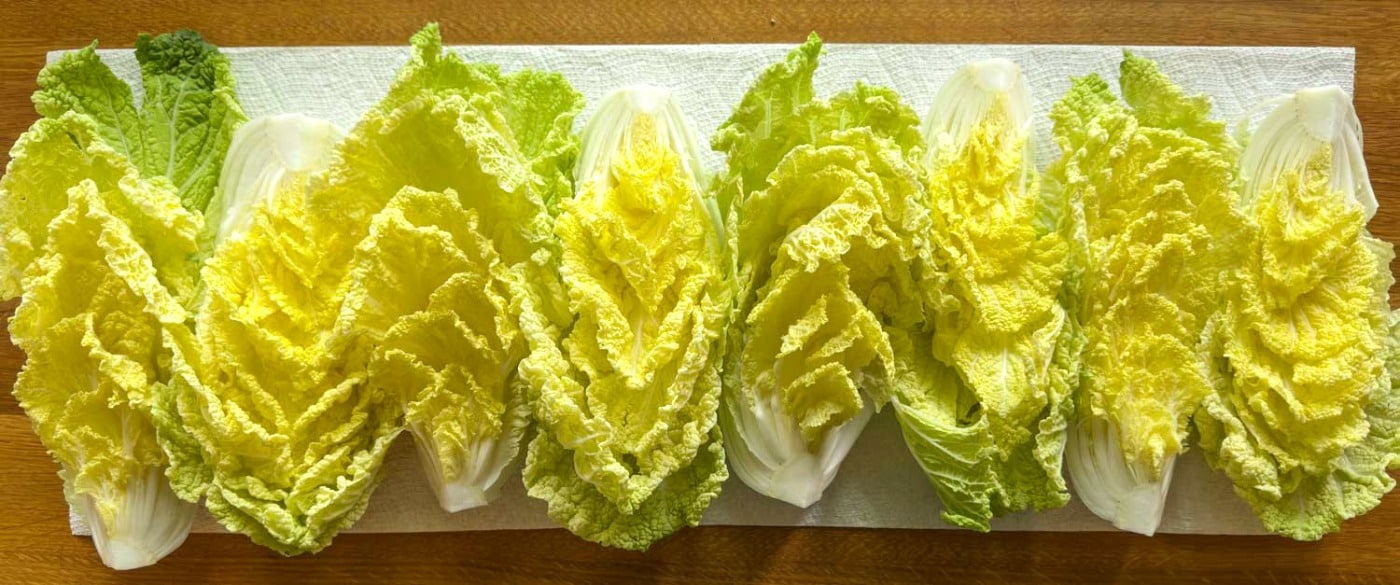
It begins by separating a couple heads of napa cabbage into quarters and soaking them in salted water which will draw out a lot of the liquid from the cabbage. After a few hours of soaking, the cabbage is thoroughly rinsed and squeezed dry. I want to put in a word here about keeping the cabbage leaves intact and attached to the core rather than chopping them. Personally, I think there is a big difference in the end result. The whole leaves retain more of their structural integrity and I also think they simply taste better.
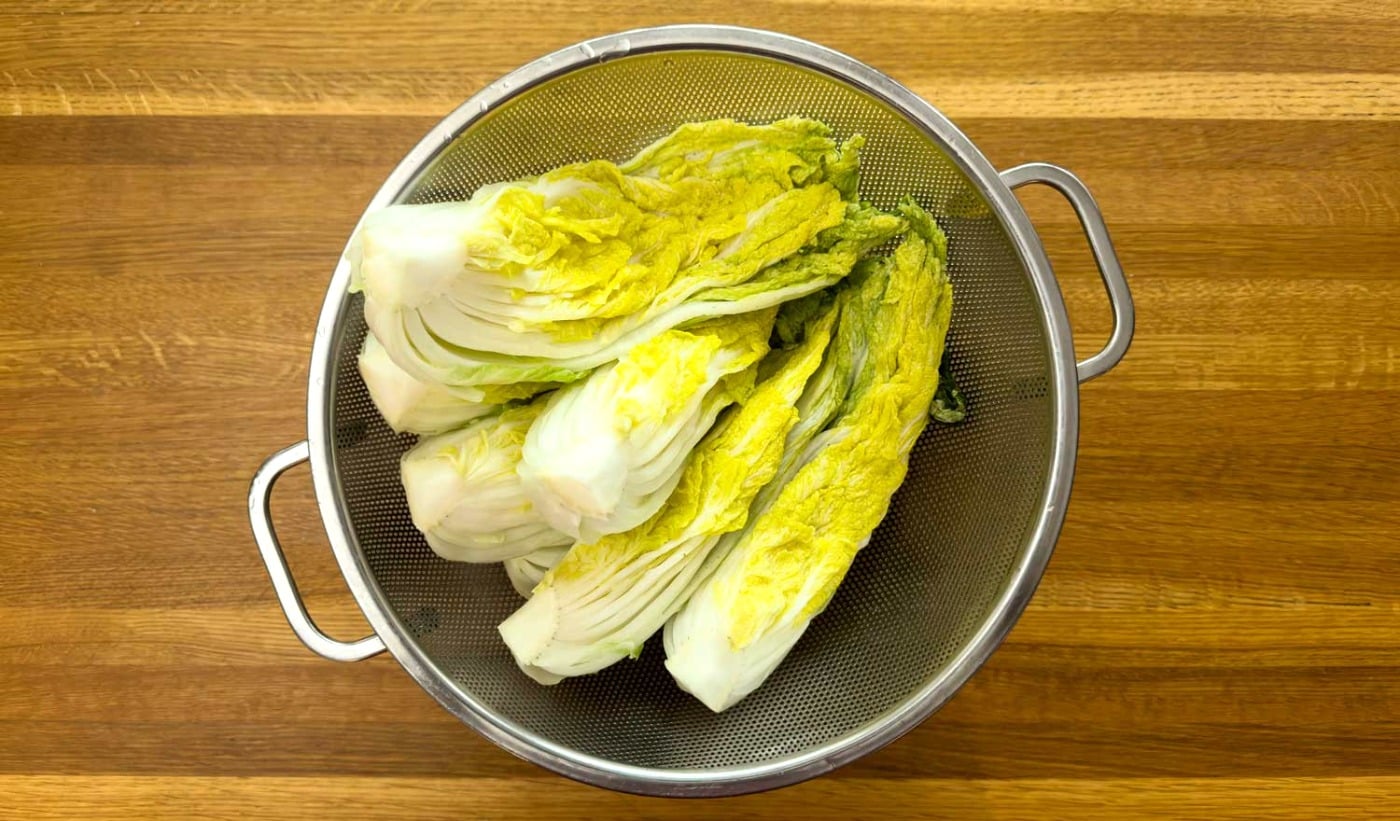
In the meantime, you mix up all the sauce ingredients. Gochugaru, Korean red chili flakes, is the definitive ingredient most commonly used and there’s plenty of it in this recipe. Onion, red apple, Korean pear, garlic, ginger, fish sauce, Korean radish, and scallions are mixed together with a couple of other ingredients which are key to this particular recipe. I’ve seen saeujeot, salted fermented shrimp, called for in other kimchi recipes, but more often than not I see shrimp paste. Saeujeot is used here and I think it has a much cleaner taste.
The other ingredient that intrigued me is maesil cheong, which is green plum syrup. Eric mentions how he contemplated eliminating this from Jean’s recipes and substituting a more easily procured item, such as brown sugar, honey, etc., but decided against it because the syrup is so distinctive. I’d never tried it and since I was making a trip to my local Korean market for some of the other ingredients, I bought a bottle. Well, he is so right. This syrup is unique. It is much less sweet than honey, and has a pronounced fruity flavor. I am convinced this is one of the reasons the kimchi is so exceptional. There are only 3 tablespoons in the sauce, but it adds depth and rounds out the other flavors.
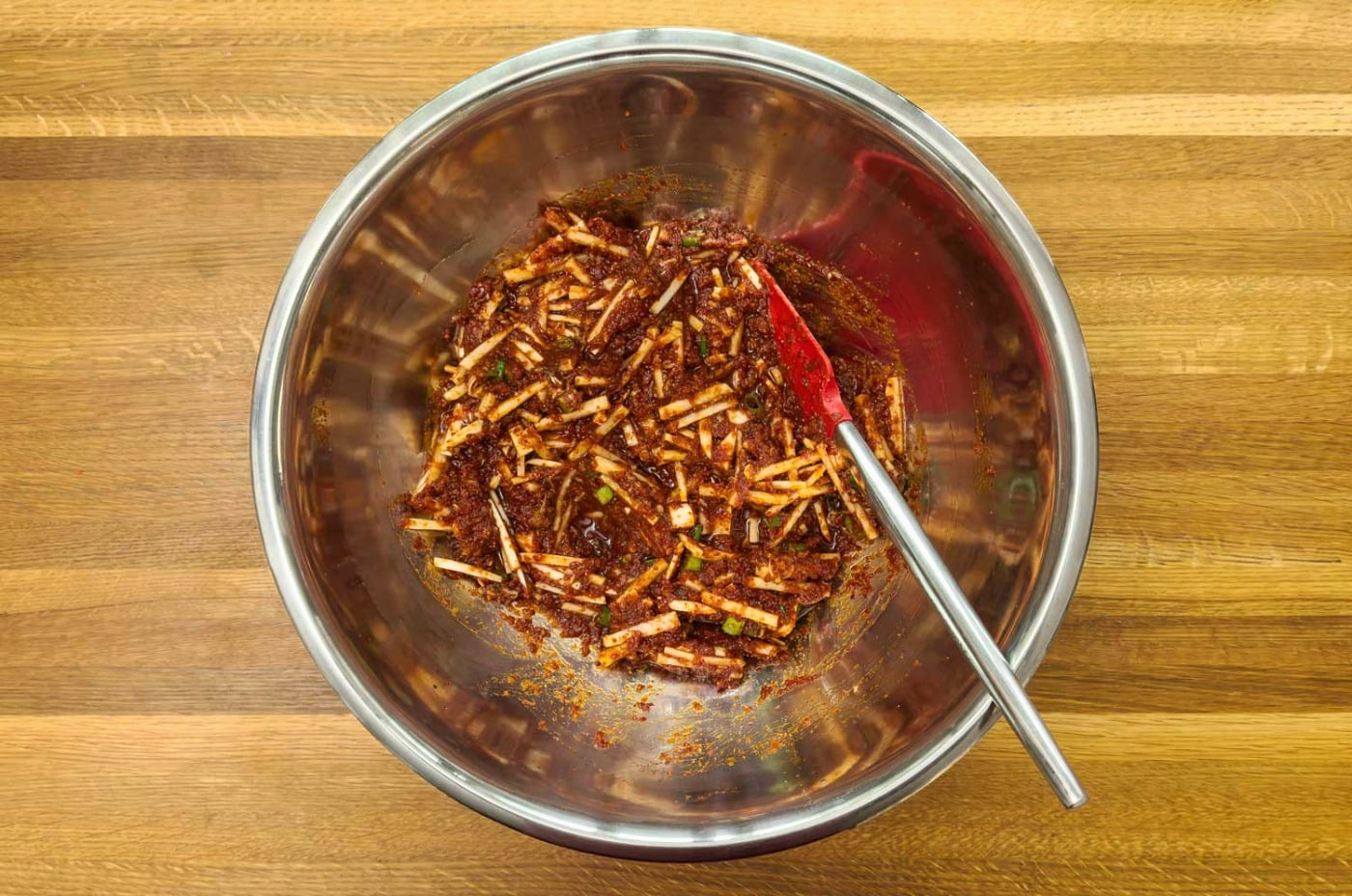
After coating the cabbage leaves with the sauce, each quarter is folded in half and placed into a one gallon jar, where it is left to sit at room temperature for 2 – 3 days, until it begins to ferment and sour. After that it is refrigerated for 2 to 3 weeks until it is fermented.
I did taste tests all the way through the whole process. I tasted it when it was initially mixed – it can be eaten immediately, but won’t have any of the sourness associated with fermentation. I knew I was onto something from the first taste. It was already so well balanced I could easily have enjoyed it from the get go. But I wanted to give it its fair due and let it do its fermenting thing. I then tasted it weekly and found that 3 weeks was the magic number. At that point it had come to full fruition and was really perfect. It’s the cleanest and most fully flavored kimchi I’ve ever tasted.
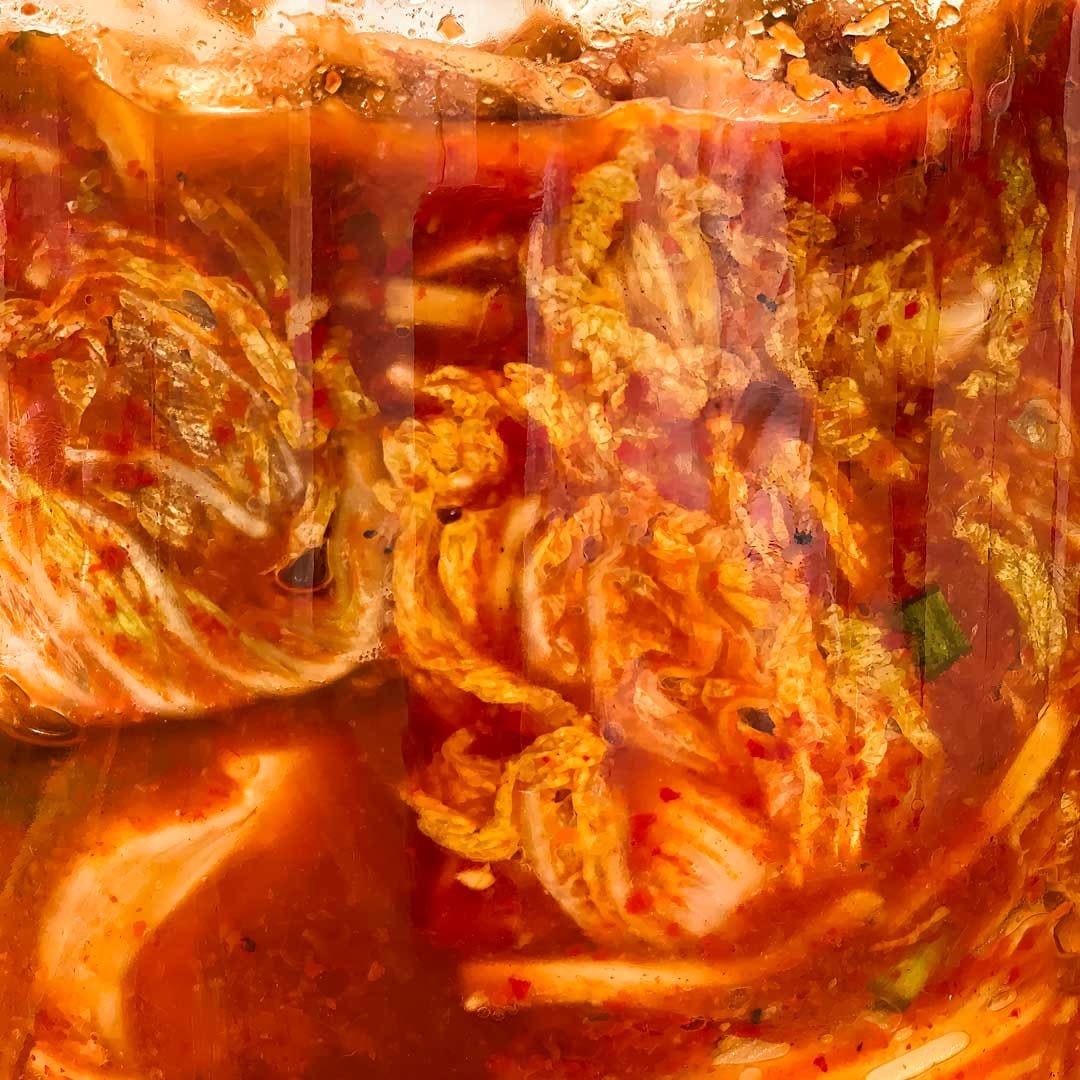
I made it over 6 weeks ago and we’ve been eating it regularly since then, in many different ways. I’ve even eaten it very simply by chopping it up and serving it over a bowl of rice with nothing else added. It is that good. I’m getting ready to make a new batch in the next couple of weeks, as we’re getting down to the bottom of that gallon jar and I don’t want to be without it. I’ll be posting some of the recipes I’ve made using this wonderful kimchi and I hope it nudges you into making it yourself. You’ll see what I mean.
Link to the recipe for Jean’s Perfect Jar of Kimchi:
https://www.wbur.org/hereandnow/2022/03/31/korean-american-eric-kim
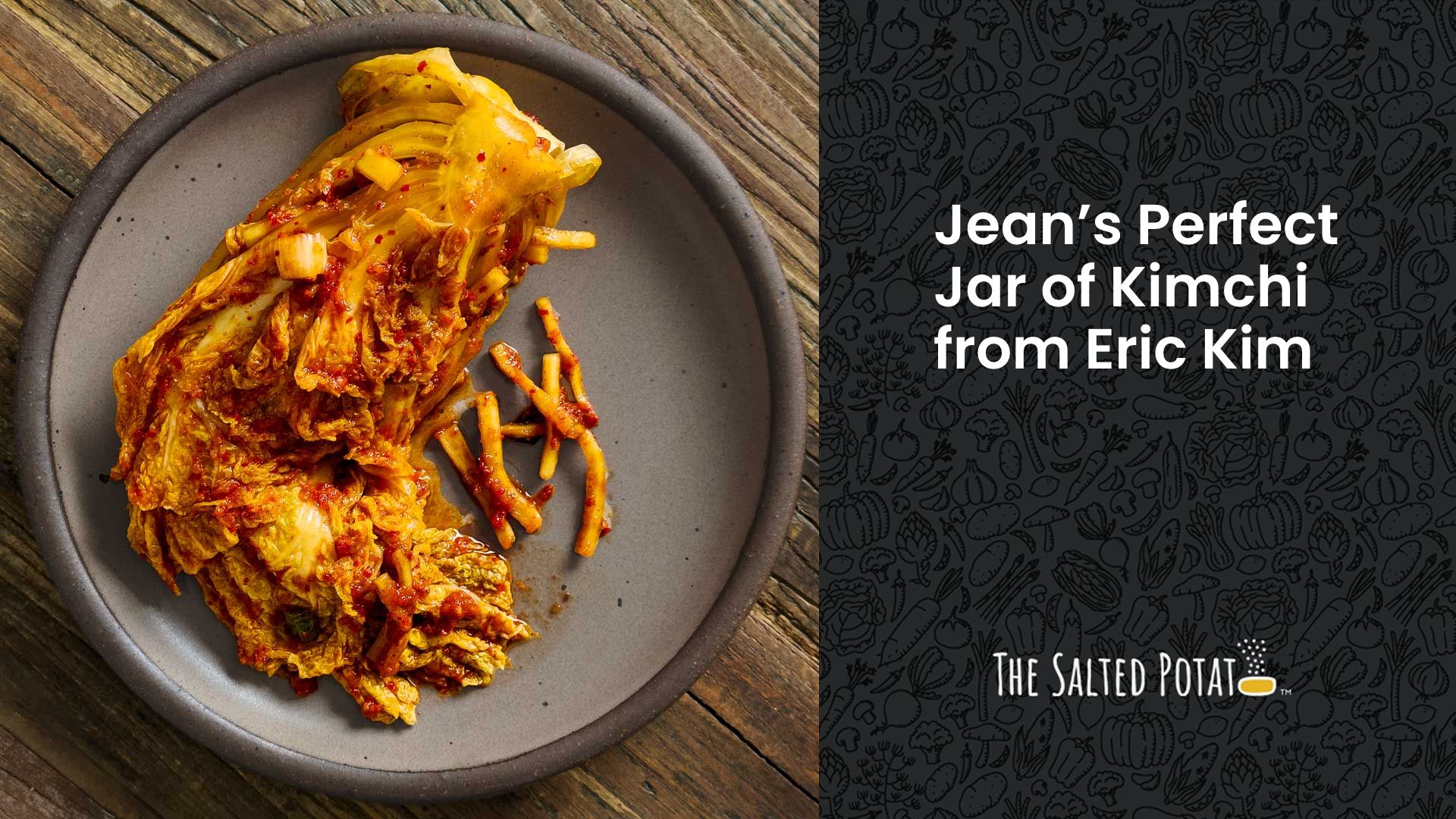

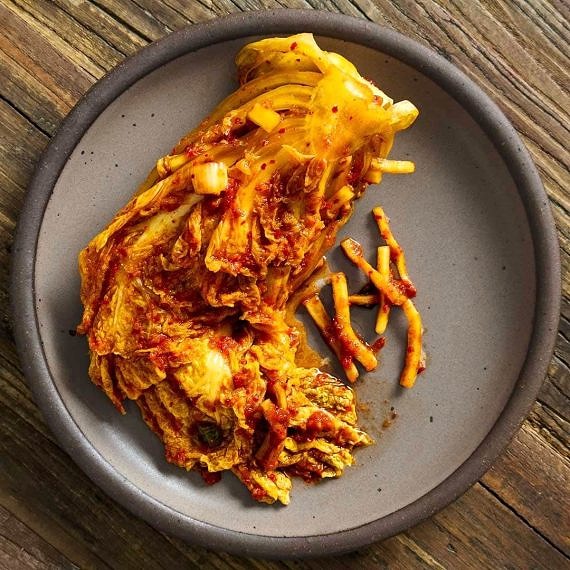
2 Responses
Hi Renee,
Finally got around to putting this together. I had to make a few changes because of my shrimp allergy (used 2 T. light miso); I could not locate the green plum syrup (used apple cider vinegar/sugr/water substitute); and ended up using a Bartlett pear for the Asian. It smells and looks wonderful so I can’t wait until it is fermented and ready to eat! It made a lot but that’s a good thing in my book!
Hi, Karen! Well, I think you did very well with your substitutes. It should be great. I made a new batch 2 weeks ago and can’t wait for it to be ready to eat in another week. I taste it as it ferments and I do think it’s necessary to wait for 3 weeks in order for it to start becoming sour. I’m so with you about the amount it makes. I want plenty!!! I’ve gotta tell you something funny that happened this time around. I had just finished off my last batch when I was on the third day of the new batch sitting at room temp. I thought, Hey, why don’t I add some of the liquid from the previous batch, thinking it would give it a jump start on the fermentation process. So, I added a few spoonfuls to the new batch. Well, holy crap. I took a look at it after a couple of hours. It gave it a jump start alright. It was bubbling away and was getting ready to flow all over my counter top. Thank goodness I only had the lid barely on the jar, so some of the gas was escaping. I quickly spooned off some of the liquid and got that sucker into the fridge. LOL!!! It’s been fine ever since. I love this kimchi so much, I don’t see myself ever using another recipe. I hope you love it as much as I do. Can’t wait to hear what you think!